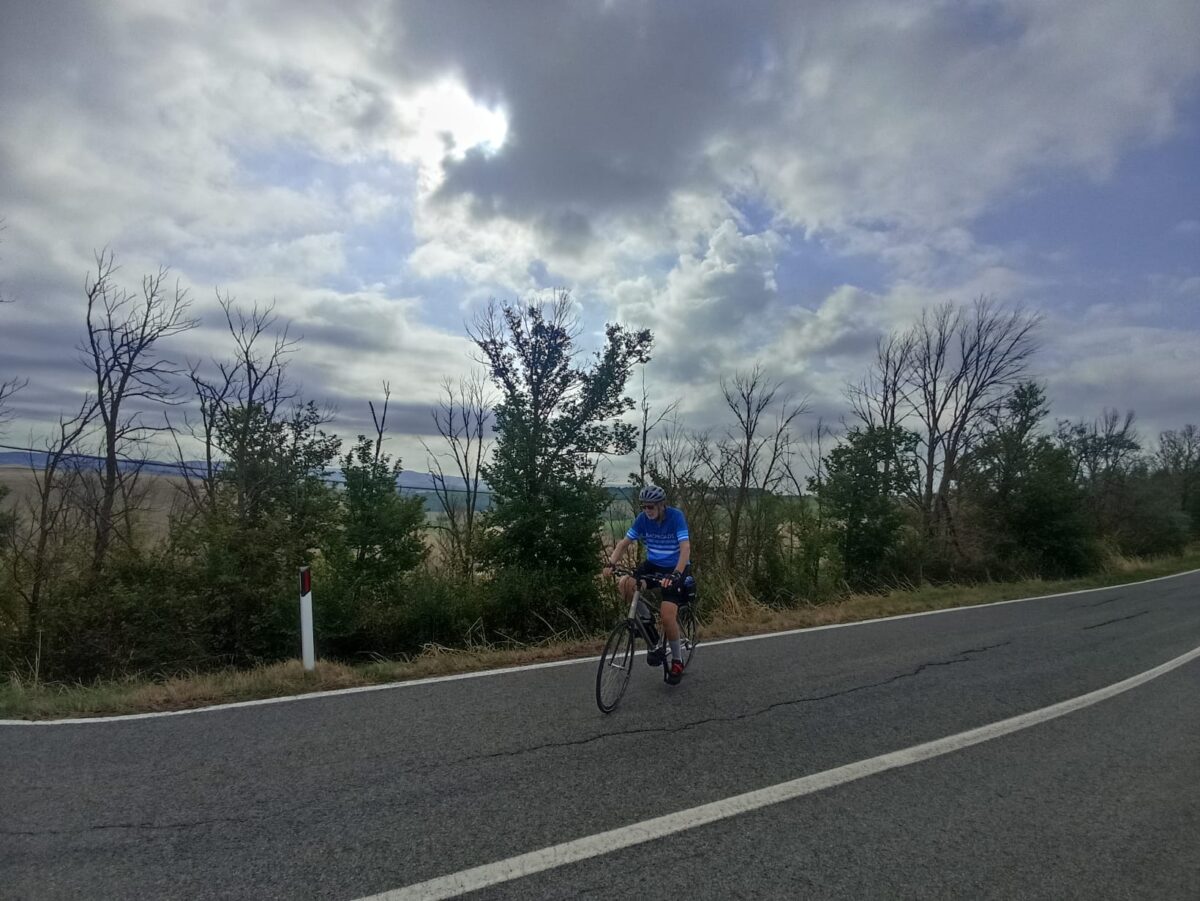In the morning we left the hotel and rode 25.8 miles to Castelnuono Berardenga, with a stop for caffe’ in Aribia. I passed on the additional six plus miles going through San Felice. After a leisurely lunch in Castelnuono Berardenga I rode the additional 3.4-mile jaunt to the Villa Curina, a 16th century villa surrounded by trees and with a very nice Italian-style garden, our home for the next two nights.


At 5:00 pm we were taken to Siena for a tour of that most interesting place and a lecture about the famed Il Palio, probably the most crooked horse race in the world. Siena consists of 17 contrade (neighborhoods). Each has a unique name, mascot, church, and community building. No matter where a person makes their home, they belong to the contrada to which they are born.
Only ten of the seventeen contrada are represented in each Il Palio, the seven who did not participate in the previous race and three others chosen by lottery. The horses to be used are selected by a panel of judges and then assigned randomly. The first fix is that not all the horses are of equal talent or ability. The second fix is the jockeys who can come from anywhere and are hired for extravagant amounts. Their ability to win races seems secondary to their ability to absorb and hand out harm to the other jockeys and the horses. Each jockey is provided with a short crop made from the penis of a bull, to be used to encourage their own horse and to inflict damage on any rider or horse within reach.
The race starts with nine of the horses at the starting line, the tenth gets a running start. The course itself is tons of dirt hauled in over four days to cover the stone pavement of the medieval Piazza del Campo. The ancient buildings lining the course are padded with mattresses that offer little protection to horses or riders.
The contrada’s horse that crosses the finish line first after three laps around the course wins, if it has all its head ornaments intact, with or without the jockey still on board. Of course, the other riders also attempt to snatch off the head ornaments in addition to pummeling the other horses and riders. The whole spectacle is all about bragging rights. The wining contrada rushes onto the track, hugging the horse, cheering the jockey, and parading through the streets. There is a grand feast that evening and the winning horse is the guest of honor and eats at the head table. For a whole month the contrada celebrates. They proudly sport their contrada’s scarf and suck on pacifiers to demonstrate they are the newborn winners.
There is an extensive amount of waging involved and because the amount of money involved doping of the horses, both sedative and stimulatory is rampant. It is not unusual for serious injury to horses and riders to occur, minor injuries are commonplace. Once a year is not enough. The event happens on July 2nd and is repeated on Aug. 16th every summer and draws close to 50,000 spectators each time.
That evening we were on our own for dinner in Siena. I spent a very pleasant time eating and conversing with Jennifer and Matthew Smith from the St. Louis, Missouri area.



